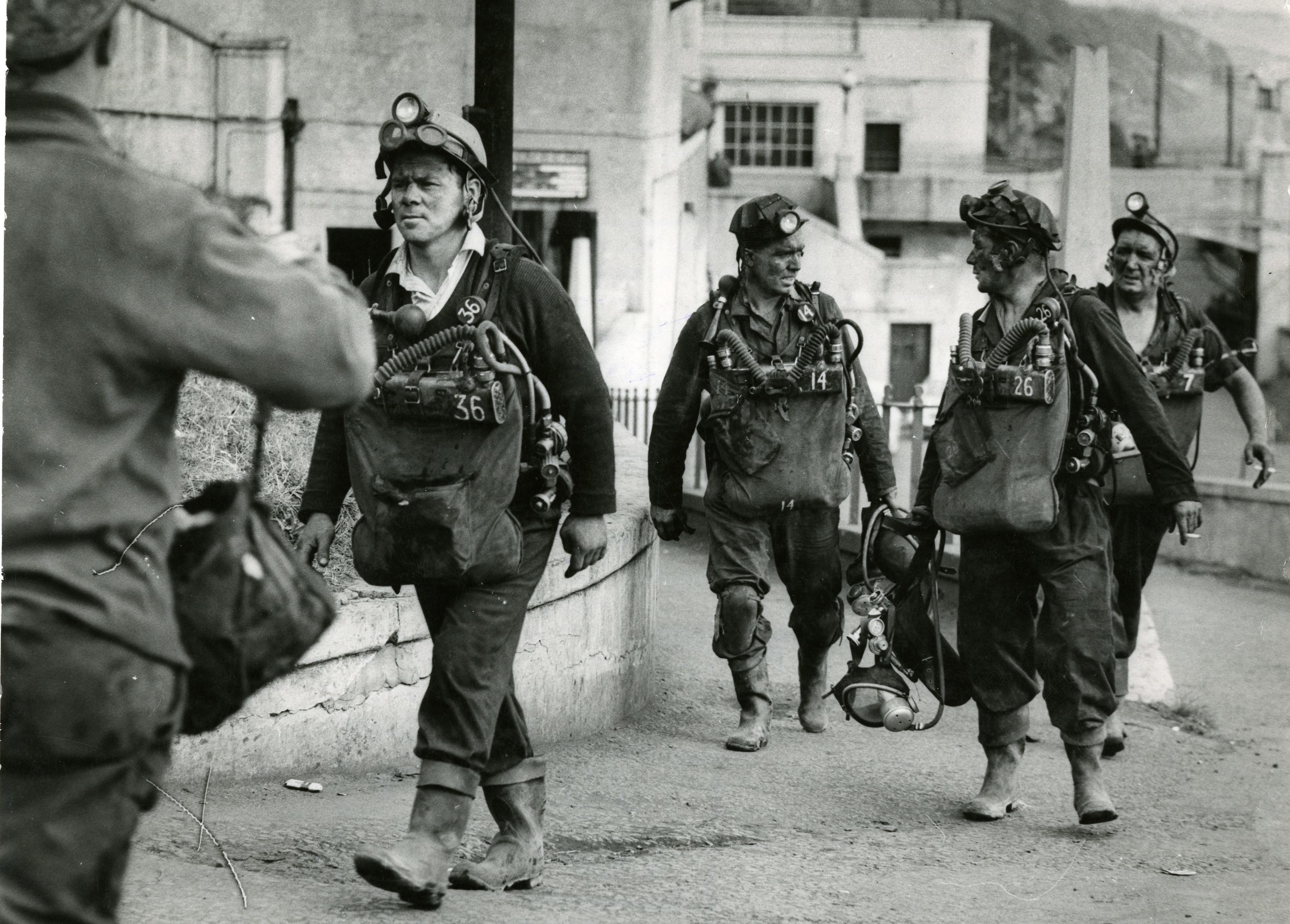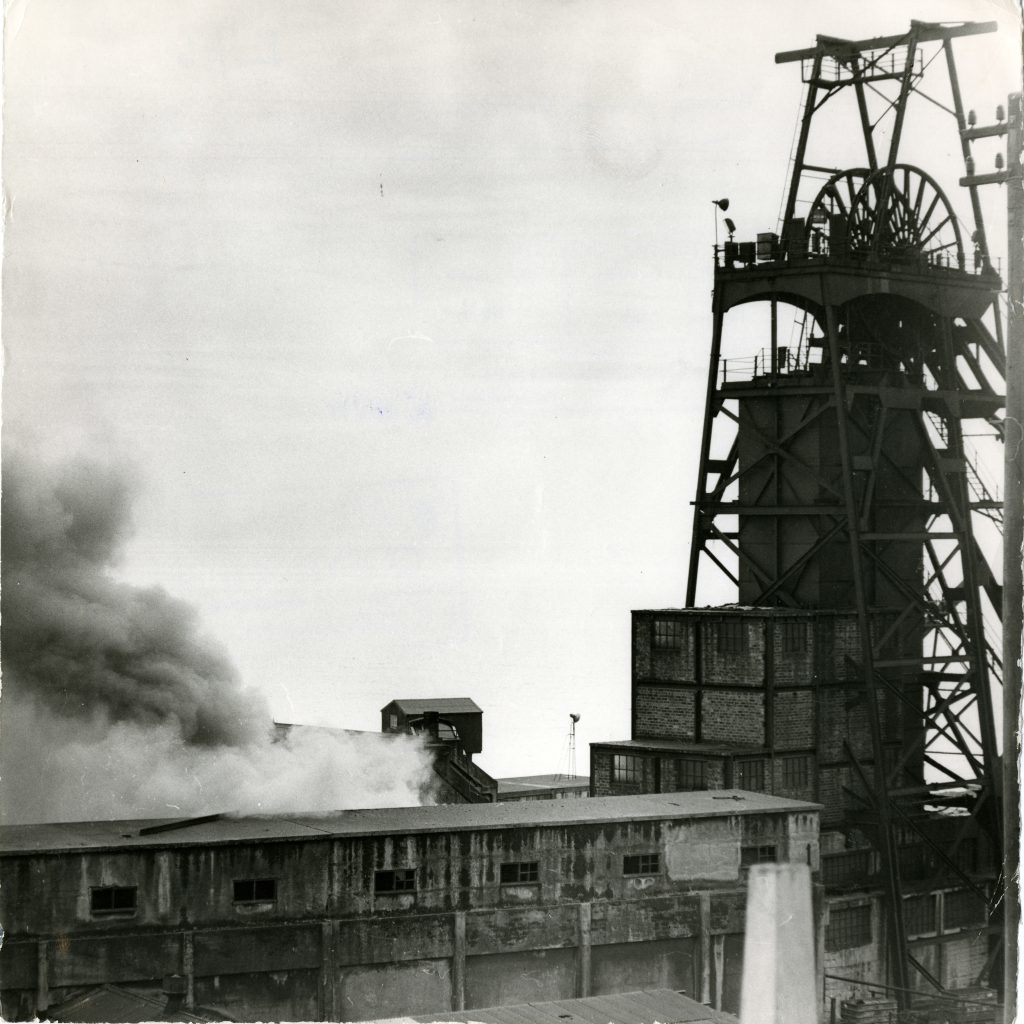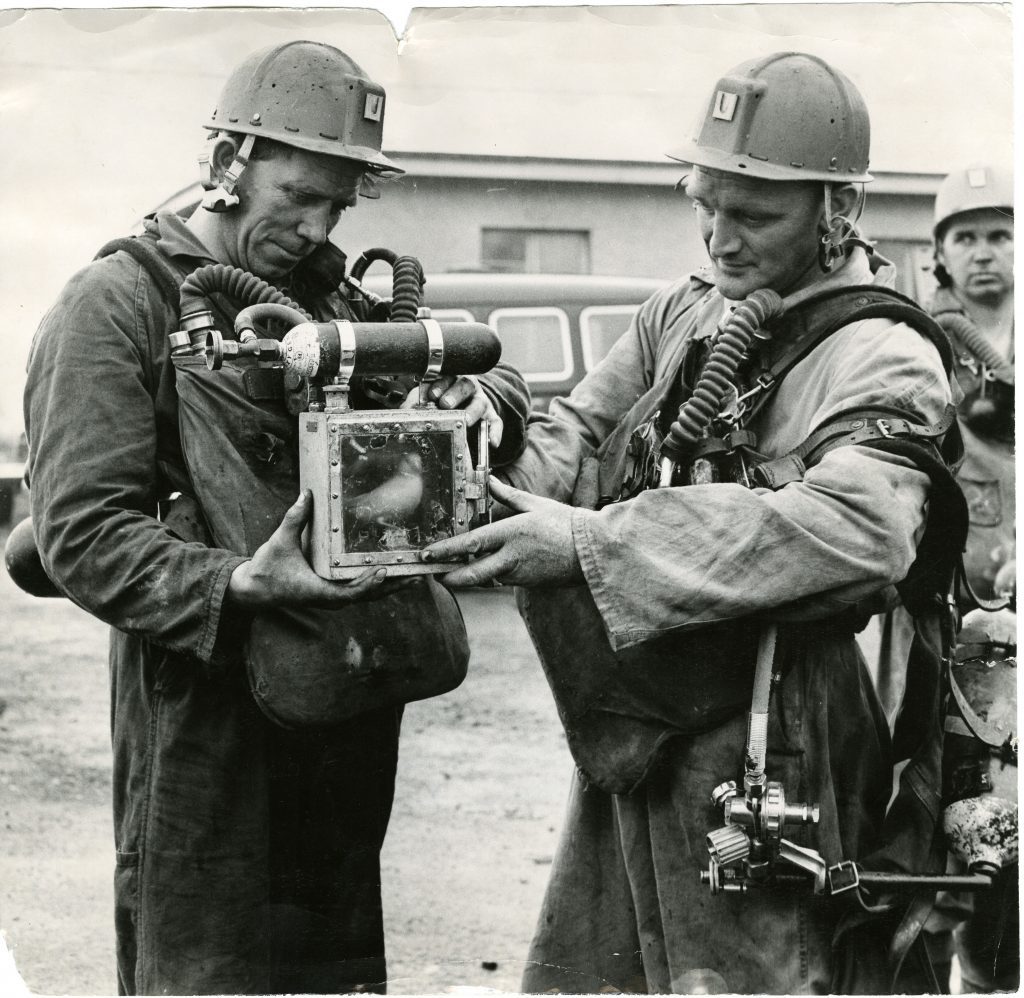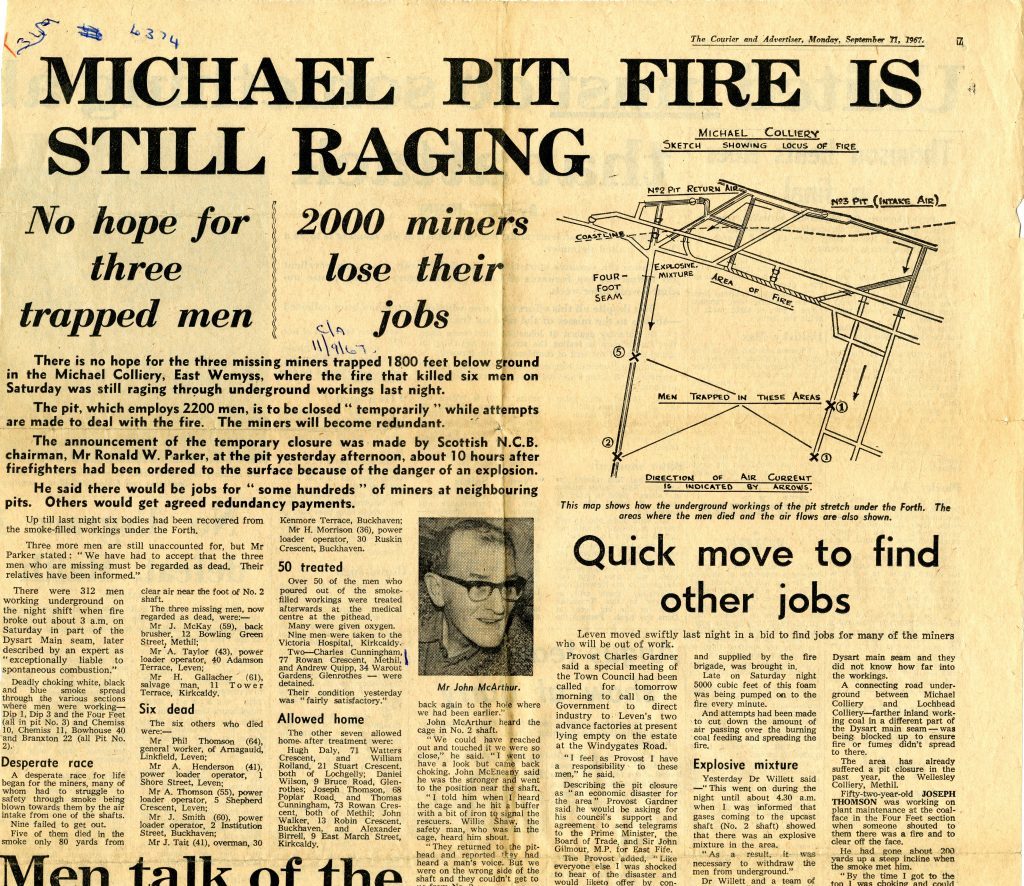Fifers are being urged to unite in 2017 to mark one of the region’s worst industrial disasters.
Nine men lost their lives in the Michael Pit disaster when a fire broke out on September 9 1967.
The Fife Mining Heritage Society is taking the lead in arranging a memorial service to mark the 50th anniversary of the tragedy, which ultimately resulted in the closure of the East Wemyss pit.
Fred Dickson, vice-chair of the society, who was working as an apprentice engineer at the pit just hours before the fire broke out, said he hoped that the forthcoming anniversary could be used to remind people of the Michael disaster and other tragedies in the coal mines of Fife.
He said: “It’s amazing the amount of people that don’t realise that it’s the 50th anniversary of when the Michael closed in 1967.
“It’s quite surprising and a wee bit disappointing really. That’s why the Fife Mining Heritage Society want to raise the profile.
“We’re planning to have a huge marquee with our display of mining memorabilia and other societies will be in attendance as well.
“We also hope to have a pipe band and get a Michael banner to march from the main road at East Wemyss up to where our marquee will be sited as this is as close to the Michael as we can get.
“We will also be approaching the local minister to ask if he could perform a short service.”
Born overlooking the colliery, Mr Dickson, now 68, had worked at “The Michael” for two years when fire and thick smoke claimed the lives of nine men.
“There was a lot of community spirit in mining communities and we took care of each other,” he said.
“I was friendly with one guy who was an apprentice at the time.
“As he and his journeyman were making their escape from the smoke he lost his way and when his journeyman reached safety where he was in fresh air he realised that his apprentice had not made it out.
“With no regard to his own safety, he went back into the smoke and amazingly managed to find his apprentice unconscious, so he put him over his shoulder and carried him to safety.”
Mr Dickson continued: “I had just moved to Glenrothes and I heard about it on the news in the morning.
“I drove straight there and all I saw was smoke billowing out of Number 2 pit shaft. Families had gathered on the pit top waiting for word on those still to be accounted for. It was a sad sight to behold.”
The Fife Mining Heritage Society is currently seeking permanent premises to allow members of the public to view its collection of mining memorabilia.
Stating his fear that future generations could forget about the region’s industrial past, Mr Dickson added: “The sad thing about it is that it is going to be forgotten and the history of mining in Fife is remarkable.
“It is imperative that the extensive memorabilia we have is preserved for the benefit of future generations.
Michael Colliery: A timeline of tragedy.
The fire broke out in the early hours of Saturday September 9 1967 at a time when more than 300 men were working underground.
A seam of coal ignited, filling the maze of tunnels with smoke so thick that many struggled to find their way back to the surface.
Rescue teams from across Scotland were scrambled to the scene, as well as the colliery’s own rescue crew, risking their own lives to save the dozens trapped underground.
Just 24 hours after the blaze broke out, the Scottish National Coal Board chairman, Ronald Parker, announced that the pit would close temporarily, immediately making over 2,000 workers unemployed.
But in the midst of the sadness came tales of great heroism.
William Shaw, the leader of the Michael Colliery Rescue Team, was honoured with a Queen’s commendation for rescuing several men, despite sustaining burns in a secondary explosion.
David Hunter, meanwhile, received the George Medal after the hot firer carried one of his colleagues out of the pit and to safety, despite his own injuries.
While finally Andrew Taylor was awarded a posthumous award, the Edward Medal, after entering the smoke-filled tunnels to successfully rescue a man, never to emerge himself.
His body was never found and along with Hugh Gallacher, a 61-year-old pumpman, and James McKay, a 59 year-old greaser, remains entombed under the ground.
Following the fire, the pit was sealed permanently, and while many miners were redeployed elsewhere in Fife, the closure dealt a savage economic blow to the Wemyss villages and the surrounding area.



